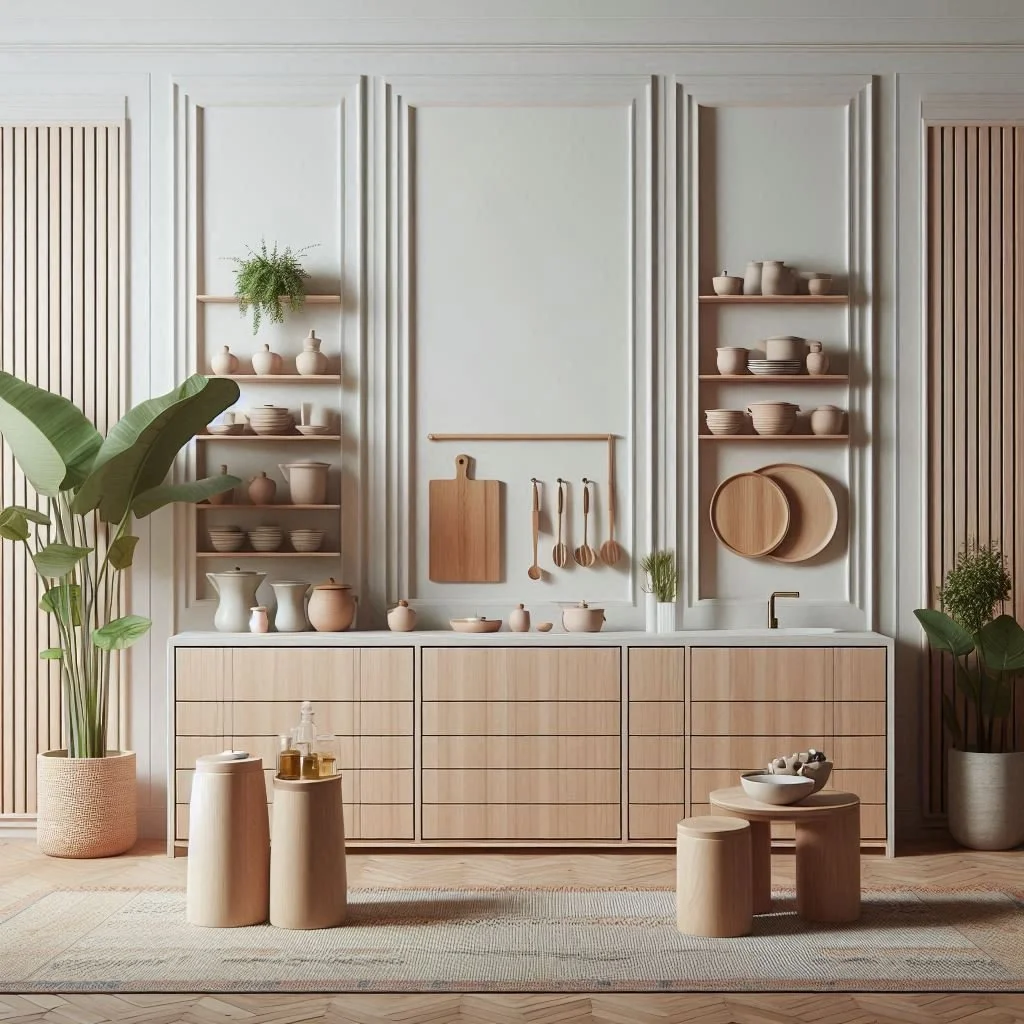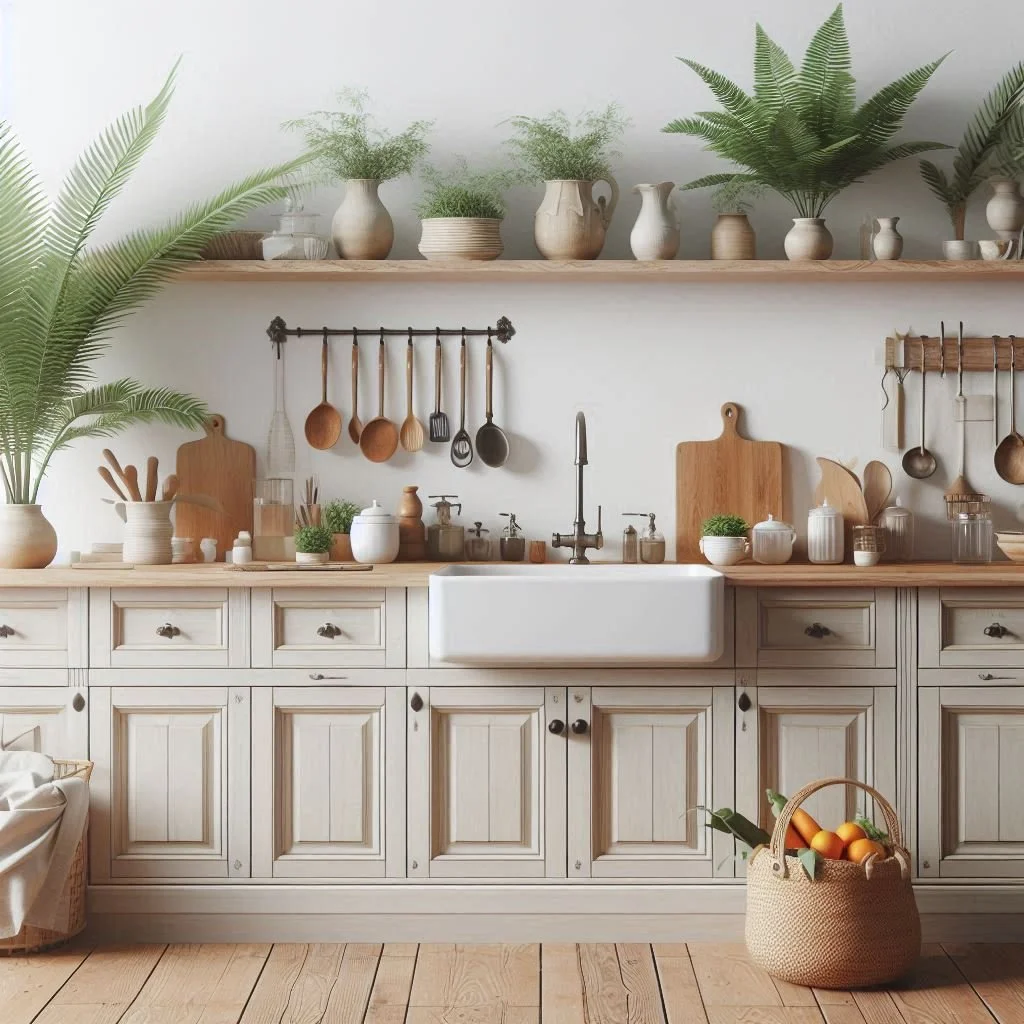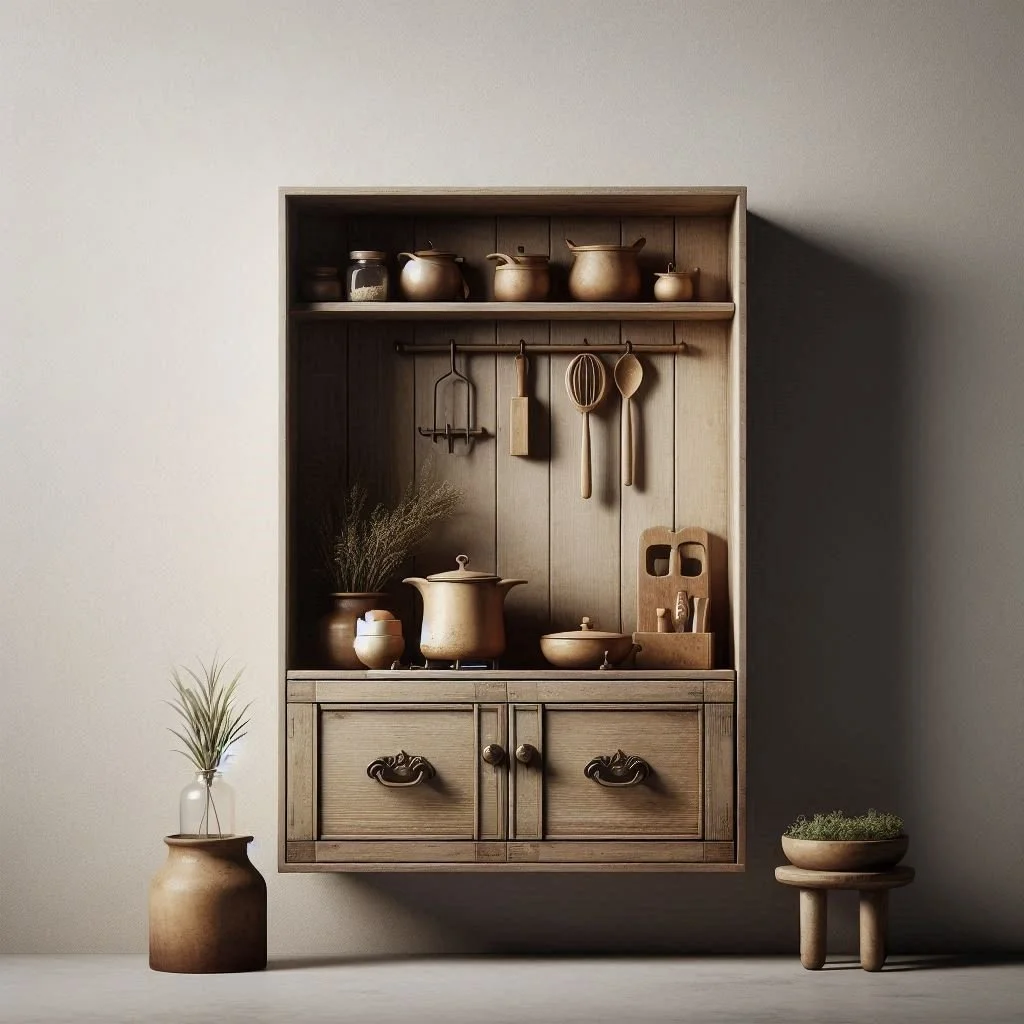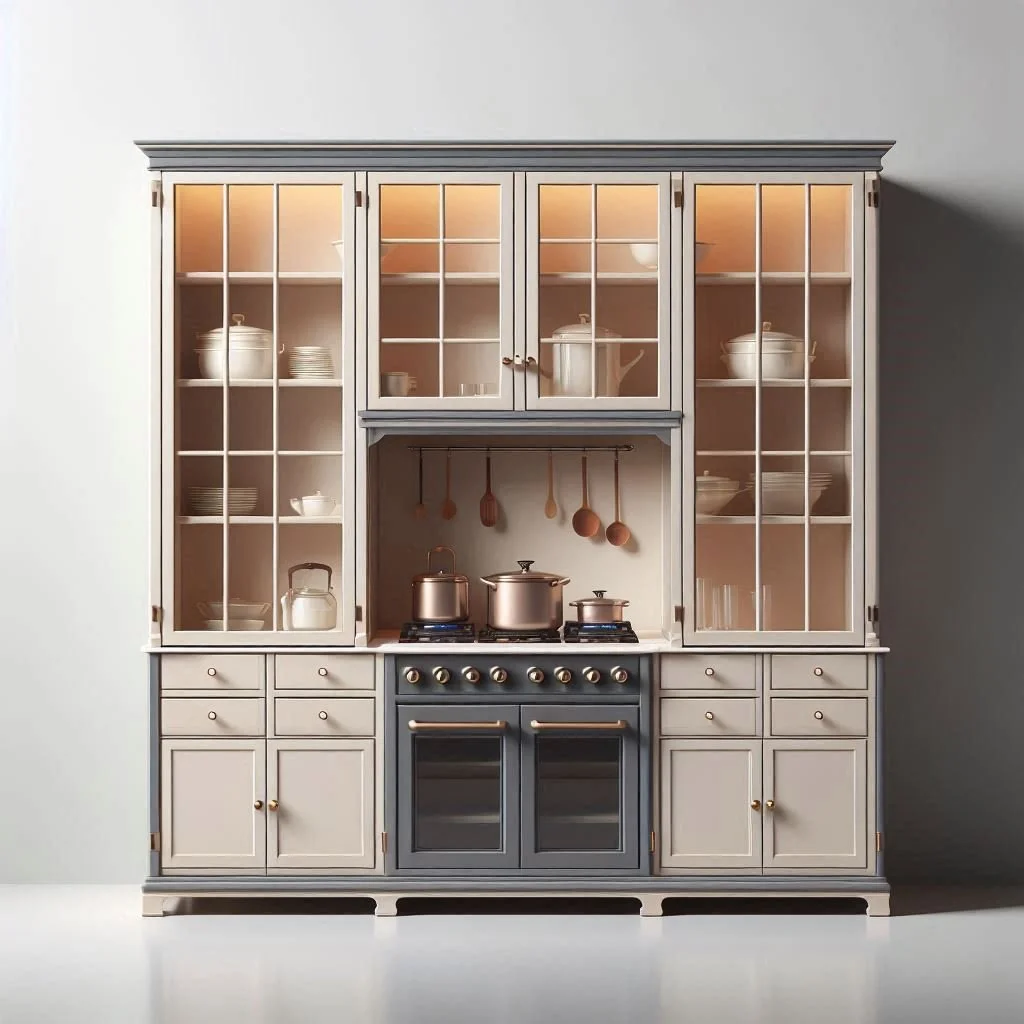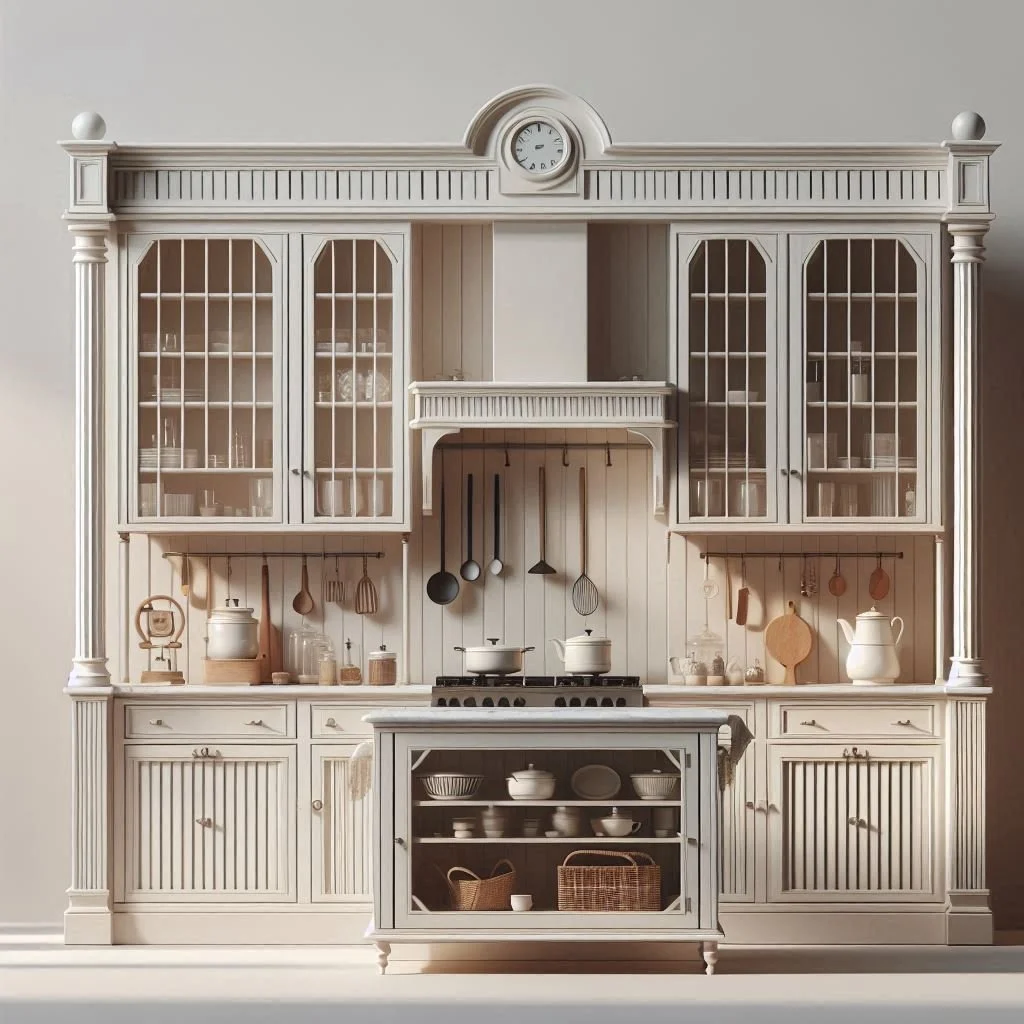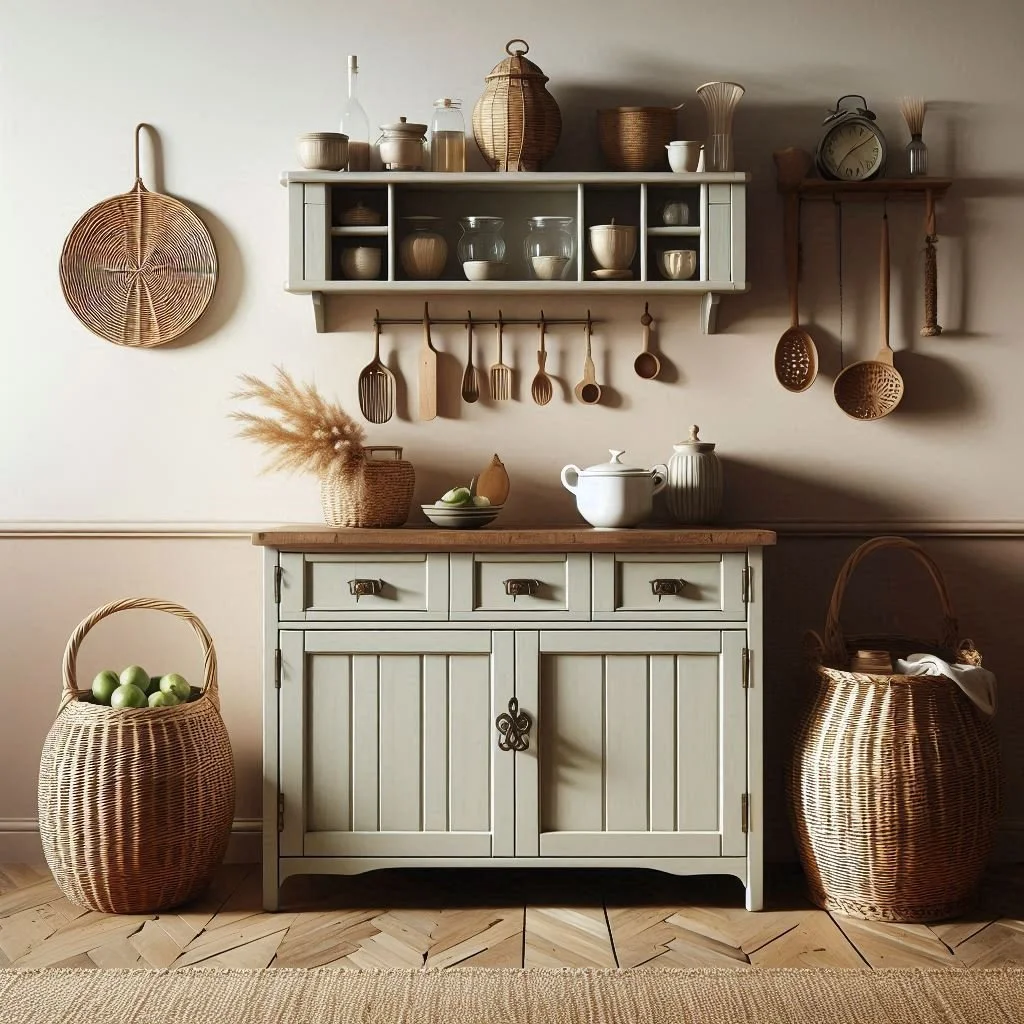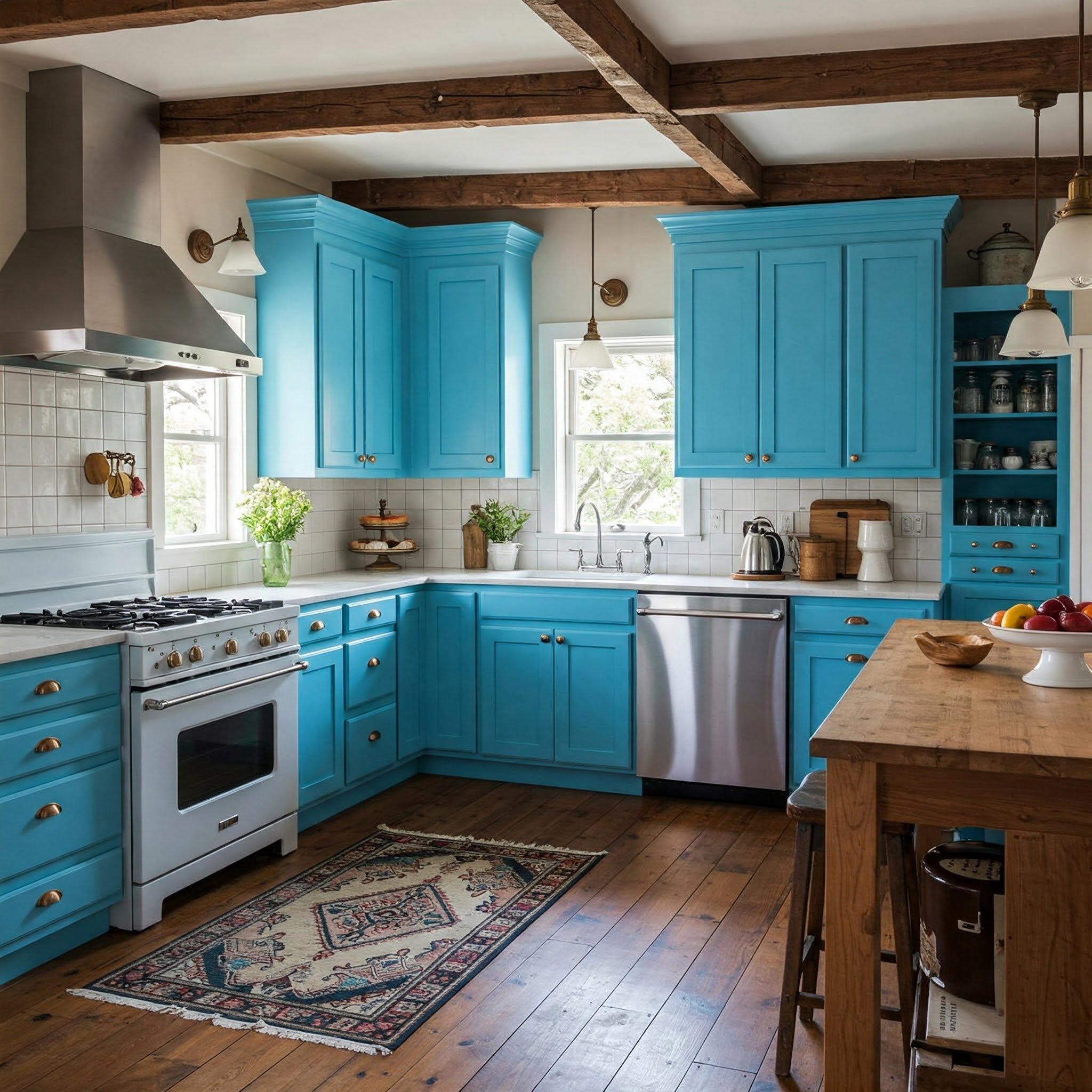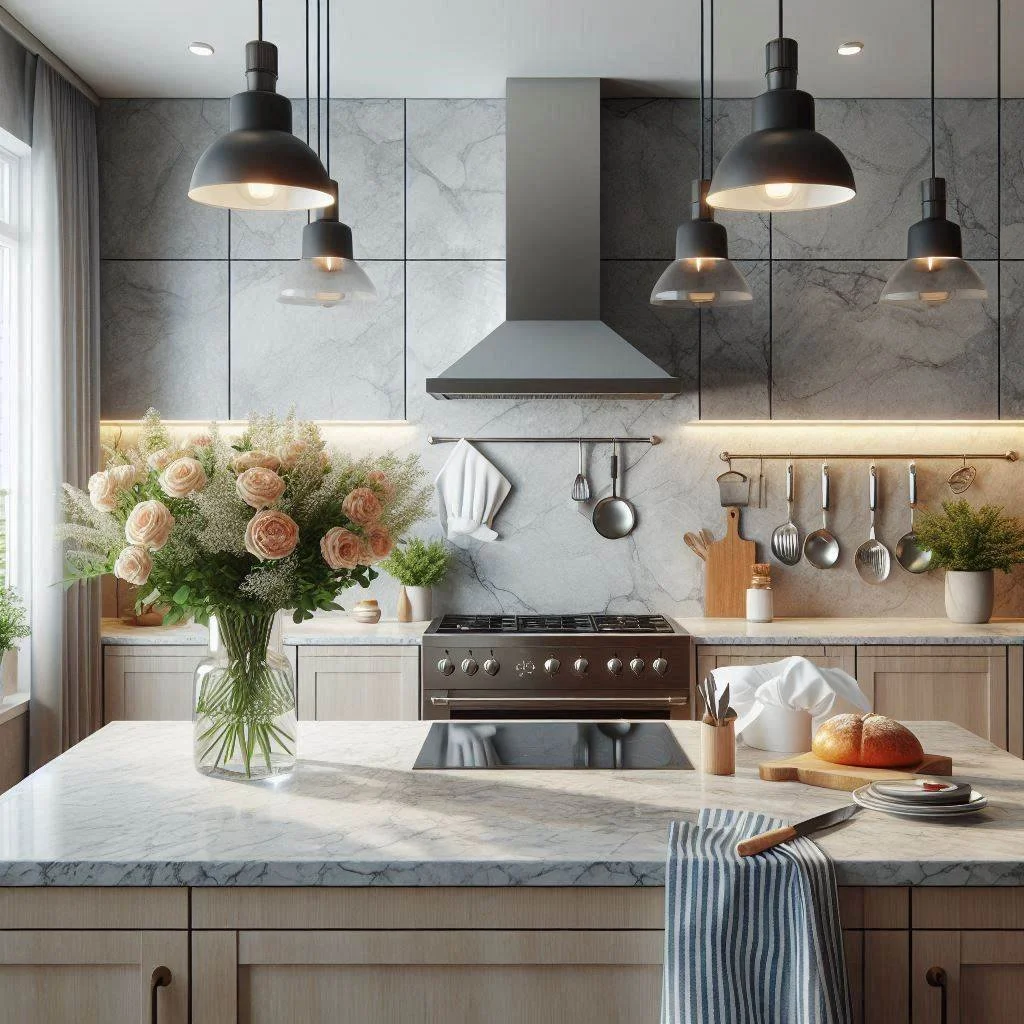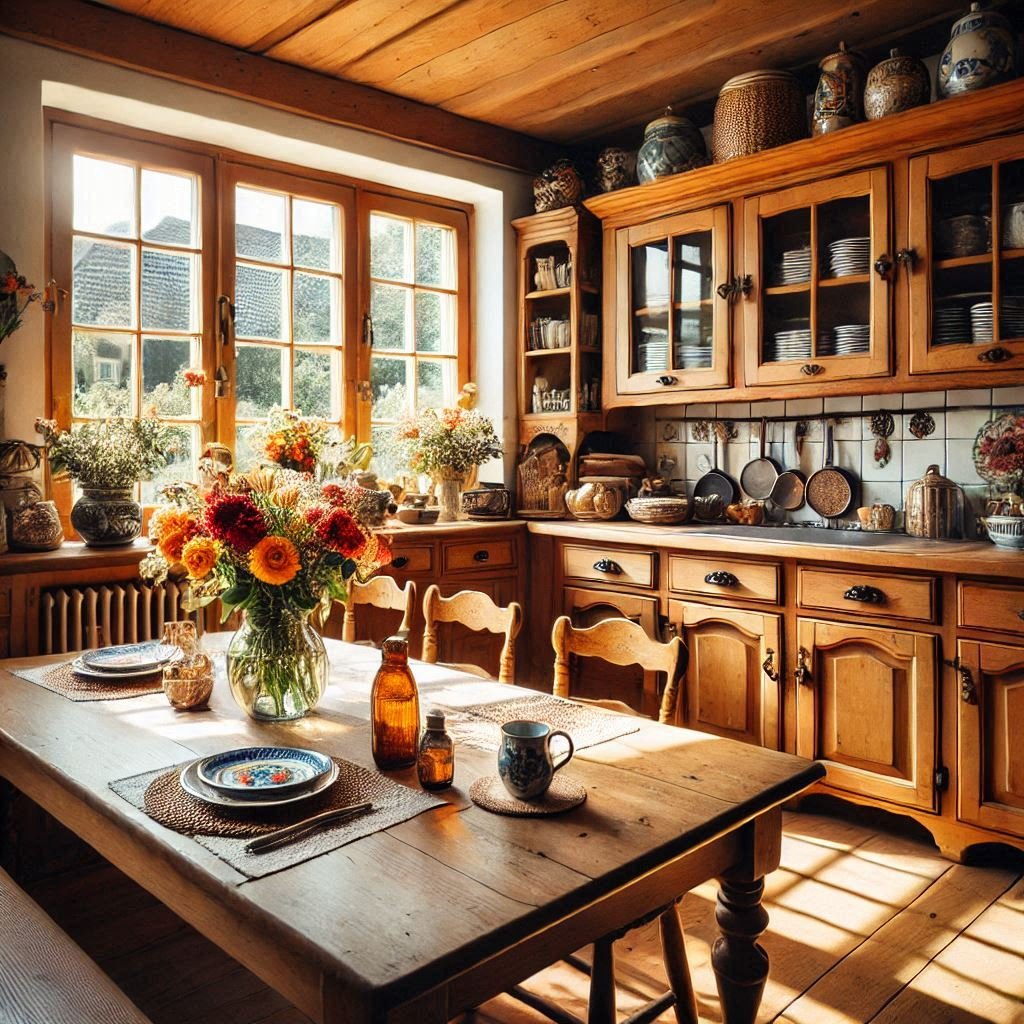15 Colonial Kitchen Ideas for Timeless Charm and Style
Discover the timeless charm of colonial kitchen design with these 15 inspiring ideas. From classic cabinetry to rustic decor, create a space full of style and history.
Colonial kitchens evoke a sense of timeless elegance, blending rustic charm with refined simplicity. Rooted in history, these designs prioritize functionality while celebrating the beauty of handcrafted details. Whether you’re a history enthusiast or simply love the cozy appeal of colonial style, you can bring this classic look into your home. Ready to explore the perfect balance of charm and practicality? Here are 15 colonial kitchen ideas that will help you craft a kitchen space brimming with timeless charm and style.
1. Classic Wooden Cabinetry
Colonial kitchens are defined by their sturdy, well-crafted wooden cabinets, which serve as the backbone of the space and exude timeless charm. To capture the warmth and authenticity of the period, opt for natural wood tones like cherry, oak, or pine. These rich, durable materials reflect the craftsmanship and attention to detail characteristic of colonial times. The natural grain and warm hues of the wood add depth and a welcoming atmosphere to the kitchen, making it feel both functional and inviting. Whether left with a natural finish or enhanced with a subtle stain, these cabinets seamlessly blend practicality with aesthetic appeal. Their classic design not only anchors the room but also pays homage to the enduring traditions of colonial craftsmanship, creating a kitchen that feels grounded, authentic, and full of character. Perfect for both traditional and modern spaces, these cabinets stand the test of time.
2. Natural Wood Flooring
Natural wood floors are a hallmark of colonial charm, bringing warmth and character to any kitchen. Wide planks with a slightly distressed finish exude a rustic appeal while retaining an air of timeless elegance. This classic choice grounds the space in history, creating a connection to traditional craftsmanship, while seamlessly blending with modern design elements. The natural variations in wood grain and texture add depth and visual interest, making each floor unique. Beyond aesthetics, wood floors provide a durable and practical foundation for everyday use, standing up to the demands of a busy kitchen. Their versatility allows them to complement a range of styles, from farmhouse-inspired to contemporary. Paired with cabinetry in neutral or bold tones, natural wood floors create a cohesive and inviting atmosphere, making them a perfect choice for those who value both beauty and functionality in their kitchen design.
3. Fireplace or Hearth Feature
In colonial homes, the kitchen hearth was the heart of the home, serving as a gathering place for warmth and comfort. You can recreate this timeless charm by incorporating a faux fireplace or integrating a wood-burning stove into your kitchen design. A faux fireplace adds a touch of rustic elegance, providing the visual warmth of a hearth without requiring extensive renovations. For a more authentic feel, a wood-burning stove not only evokes the spirit of colonial times but also offers functional heat, making your kitchen a cozy retreat. Pair these features with exposed brick, natural wood accents, or cast iron elements to enhance the nostalgic atmosphere. This design choice brings both literal and figurative warmth to your space, creating a welcoming focal point that blends historic charm with modern practicality, making your kitchen a true centerpiece of the home.
4. Butcher Block Countertops
Butcher block countertops are a quintessential feature of colonial kitchens, combining timeless style with practicality. Renowned for their durability and rustic charm, these countertops offer a warm, natural aesthetic that complements a variety of kitchen designs. Butcher block surfaces are ideal for food preparation, standing up to daily use while adding texture and character to the space. For a cohesive, traditional look, pair them with wooden cabinets in complementary tones, emphasizing their natural beauty. Alternatively, use butcher block as a contrasting element against painted cabinetry in hues like white, cream, or navy, creating a balanced blend of modern and rustic styles. Easy to maintain with regular oiling, butcher block countertops are as functional as they are attractive, making them a versatile choice for kitchens of any size. Whether in a fully colonial-inspired kitchen or a contemporary space with rustic accents, they bring warmth and timeless appeal.
5. Neutral Color Palettes
Colonial kitchens often embrace neutral tones such as beige, cream, and soft greys, creating a calm and inviting atmosphere that highlights the room’s timeless charm. These soothing colors provide a versatile backdrop, allowing natural wood elements, stone surfaces, and other textures to take center stage. The muted palette not only enhances the kitchen’s warmth but also complements the simplicity and functionality associated with colonial design. Soft greys add subtle depth, while beige and cream bring warmth and brightness, ensuring the space feels welcoming and cohesive. These tones pair beautifully with natural wood floors, butcher block countertops, and rustic accents, emphasizing the colonial aesthetic. Whether applied to walls, cabinetry, or decorative elements, neutral colors provide a foundation of elegance and restraint, perfectly balancing traditional charm with modern sensibilities. This timeless palette transforms the kitchen into a serene and visually harmonious centerpiece of the home.
6. Open Shelving for Practicality
Open shelving is a practical and quintessentially colonial design element that brings charm and functionality to the kitchen. Often crafted from natural wood or simple materials, these shelves provide a timeless way to showcase your cookware, plates, and pantry staples. Mason jars filled with grains, spices, or dried goods add a rustic touch, while neatly arranged dishes and cookware evoke the simplicity and practicality of colonial kitchens. Open shelving not only keeps essential items within easy reach but also creates an opportunity to infuse the space with personality and warmth. This design choice works beautifully alongside natural wood tones, neutral colors, and other classic colonial features. Whether used for everyday essentials or decorative displays, open shelving adds depth and character to your kitchen while maintaining its connection to historic charm. It’s a versatile and stylish solution for blending tradition with modern convenience.
7. Copper or Cast Iron Cookware
Hanging copper pots or cast iron pans from a pot rack or displaying them on open shelves is a timeless way to combine functionality with vintage charm in your kitchen. These durable materials are not only practical for cooking but also serve as striking decorative elements that enhance the kitchen's aesthetic. Copper pots bring a warm, gleaming touch, while cast iron pans add a rustic, classic feel, making them perfect for creating a kitchen with vintage character. A ceiling-mounted pot rack keeps cookware accessible while freeing up cabinet space, adding a layer of practicality to the design. Alternatively, arranging them neatly on open shelves turns everyday tools into eye-catching displays. These materials pair beautifully with natural wood tones, neutral palettes, and other colonial or farmhouse-inspired details, making them an ideal choice for adding both style and substance to your kitchen.
8. Colonial-Inspired Lighting Fixtures
Lighting plays a pivotal role in defining your kitchen's aesthetic, and colonial-inspired fixtures can elevate the space with both style and function. Wrought iron chandeliers, candle-style sconces, and lantern-style fixtures are perfect for echoing the charm of the colonial era while adding a timeless touch. These pieces serve as functional art, combining practicality with elegance to create a warm, inviting atmosphere. Wrought iron chandeliers bring a dramatic, rustic element, while candle-style sconces provide soft, ambient lighting that enhances the room's coziness. Lantern-style fixtures, with their classic design and warm glow, make a striking statement over kitchen islands or dining areas. Pair these lighting options with natural materials like wood and stone to complete the colonial aesthetic. Whether used as focal points or subtle accents, these fixtures add character and historical charm, making your kitchen both stylish and beautifully illuminated.
9. Paneled Walls and Wainscoting
Wainscoting and paneled walls are signature elements of colonial design, bringing depth, texture, and timeless charm to your kitchen. These architectural details create a sense of warmth and refinement, making the space feel cozy yet elegant. Wainscoting, typically installed along the lower portion of walls, adds visual interest and can double as a protective surface in high-traffic areas. Paneled walls, whether fully covering a wall or serving as an accent, enhance the kitchen’s character while maintaining a classic aesthetic. Choose natural wood finishes for a rustic, authentic colonial look, or opt for painted finishes in neutral tones like white, cream, or soft grey to create a brighter, more modern take on the style. Perfectly paired with natural materials like wood floors and stone countertops, wainscoting and paneling elevate the overall design, blending historical charm with contemporary functionality.
10. Farmhouse-Style Sinks
Farmhouse sinks are a practical and charming addition to colonial-style kitchens, combining functionality with timeless appeal. Their deep basins are perfect for handling large pots, pans, and everyday kitchen tasks, making them a favorite for both busy households and design enthusiasts. The simple, utilitarian design of a farmhouse sink aligns beautifully with the understated elegance of colonial kitchens, offering a blend of rustic charm and modern convenience. To enhance the look, pair the sink with a rustic faucet, such as a bridge or gooseneck style, in finishes like brushed nickel, antique bronze, or matte black. This pairing not only completes the aesthetic but also adds durability and functionality to your kitchen. Whether crafted from fireclay, porcelain, or stainless steel, a farmhouse sink seamlessly integrates into a colonial kitchen, providing a focal point that is both visually appealing and highly practical.
11. Rustic Hardware and Fixtures
In colonial kitchen design, details play a crucial role in capturing the style’s timeless charm. Choosing the right cabinet knobs, drawer pulls, and faucets can make all the difference, tying the entire look together with subtle elegance. Opt for materials like wrought iron or antique brass, which reflect the craftsmanship and rustic appeal of the colonial era. Wrought iron offers a sturdy, handcrafted feel, perfect for enhancing the authenticity of the design, while antique brass adds a warm, aged patina that complements the overall aesthetic. These small yet impactful touches bring cohesion to the space, blending seamlessly with natural wood cabinetry, paneled walls, or a farmhouse sink. Whether you’re going for a fully traditional colonial look or a modern interpretation with vintage elements, these hardware choices add texture, character, and a polished finish to your kitchen, elevating its charm and functionality.
12. Handwoven Rugs or Runners
Enhance the warmth and charm of your kitchen by incorporating a handwoven rug or runner. These pieces add both texture and comfort, transforming your space into a welcoming and stylish area. Rugs made from natural fibers like wool or jute are particularly well-suited for colonial or rustic-inspired kitchens, as their organic textures complement the timeless aesthetic. Wool rugs offer softness and durability, making them ideal for areas with high foot traffic, while jute brings an earthy, casual vibe with its natural tones and sturdy weave. Placing a runner along a galley kitchen or in front of the sink provides both visual interest and a cozy feel underfoot. The added texture contrasts beautifully with smooth surfaces like wood floors or stone countertops, creating balance in the design. Handwoven rugs combine practicality and style, adding a layer of warmth and personality to your kitchen while maintaining its rustic appeal.
13. Glass-Fronted Cabinets for Display
Glass-fronted cabinets are an elegant and practical addition to any kitchen, offering the perfect way to showcase heirloom dishes, vintage glassware, or decorative pieces. These cabinets add a layer of sophistication while creating a sense of openness, making your kitchen feel lighter and more inviting. The transparency of the glass allows you to turn everyday items into decorative highlights, blending functionality with style. Whether your collection includes colorful ceramics, delicate crystal, or timeless china, glass-fronted cabinets let these treasures shine. To maintain a cohesive look, organize the displayed items with a consistent color palette or theme. These cabinets work beautifully in both colonial-inspired and modern kitchens, complementing various design styles. Paired with soft interior lighting, glass-fronted cabinets enhance the aesthetic appeal of your space, making them a timeless feature that combines practicality and elegance with effortless charm.
14. Incorporating a Kitchen Island
Colonial kitchens may not have traditionally featured islands, but you can seamlessly integrate one by opting for a period-appropriate design. A rustic wooden island or one topped with butcher block is the perfect way to combine modern functionality with colonial charm. The natural wood tones and sturdy craftsmanship echo the simplicity and practicality of colonial kitchens, making the island feel like an authentic addition rather than a modern intrusion. A butcher block top adds warmth and serves as a durable surface for food preparation, while the wooden base can include features like open shelving or paneling to enhance the rustic aesthetic. This type of island not only provides extra storage and workspace but also becomes a focal point that ties the room together. Whether placed in a large kitchen or a more compact space, a colonial-style island adds charm and practicality in equal measure.
15. Decorative Touches Like Baskets and Pewter
Baskets, pewter dishes, and other simple decor items provide the perfect finishing touch for a colonial-style kitchen, combining practicality with timeless beauty. Handwoven baskets are not only functional for storing fruits or vegetables but also add texture and warmth to the space. Pewter dishes, with their muted metallic sheen, make elegant displays for flowers, dried herbs, or decorative arrangements, enhancing the kitchen’s rustic charm. These versatile pieces can also be used to organize utensils or linens, keeping essentials within reach while maintaining a tidy, cohesive look. Incorporating such decor elements highlights the simplicity and functionality at the heart of colonial design, blending utility with understated elegance. Whether displayed on open shelving, countertops, or a farmhouse table, these items celebrate the enduring charm of the colonial aesthetic while adding a personal and inviting touch to your kitchen.
Conclusion
Colonial kitchens are a beautiful blend of history and functionality. By incorporating elements like classic wooden cabinetry, neutral palettes, and rustic decor, you can create a space that feels timeless and full of charm. Whether you’re renovating or just adding a few touches, these 15 ideas will inspire you to transform your kitchen into a cozy, stylish retreat.
Frequently Asked Questions
1. Can colonial kitchen design work in modern homes?
Absolutely! You can incorporate colonial elements like wooden cabinets or rustic hardware while keeping modern appliances and layouts.
2. What materials are best for a colonial kitchen?
Natural materials like wood, stone, and metal are ideal for capturing the colonial aesthetic.
3. Are colonial kitchens practical for modern cooking?
Yes! By blending timeless design with modern functionality, you can enjoy both charm and convenience.
4. How can I add colonial touches without a full renovation?
Start small with decor items like copper pots, woven baskets, or a rustic rug. These elements instantly add charm.
5. What color schemes work best for colonial kitchens?
Neutral tones like cream, beige, and soft grey are classic choices, but you can also incorporate deep greens or blues for a bolder look.









